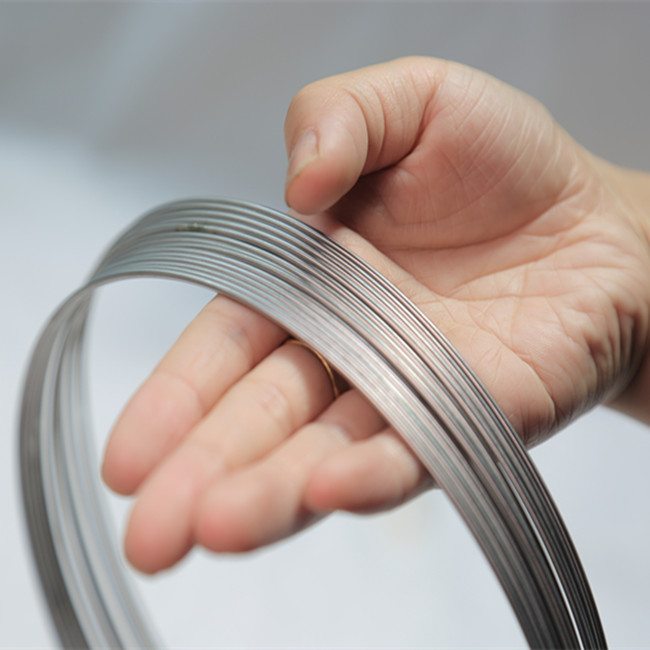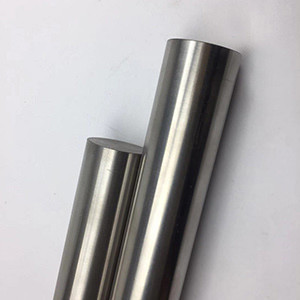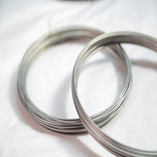
Nitinol Wire
Grade:Ti-Ni-01,Ti-Ni-02,TiNi-SS,TN3,TNC
Standard:ASTM F2063
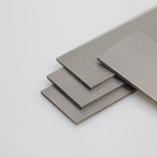
Nitinol Sheet/Plate
Grade:Ti-Ni-01,Ti-Ni-02
Standard:ASTM F2063
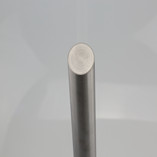
Nitinol Rod/Bar
Grade:Ti-Ni-01,Ti-Ni-02,TiNi-SS,TN3,TNC
Standard:ASTMF2063
Nickel Titanium (also known as Nitinol or NiTi) is in the unique class of shape memory alloys. A thermoelastic martensitic phase transformation in the material is responsible for its extraordinary properties. Nitinol alloys are typically made of 55%-56% Nickel and 44%-45% Titanium. Small changes in composition can significantly impact the properties of the material.
There are two primary categories of Nitinol. The first, known as “SuperElastic”, is characterized by extraordinary recoverable strains and kink resistance. The second category, “Shape Memory” alloys, is valued for the Nitinol’s capacity to recover a pre-set shape when heated above its transformation temprature. The first category is often used for orthodontics (braces, wires, etc) and eyeglasses. The first category are primarily useful for actuators, used in many different mechanical devices.
| Name | Grade | Transformation Temperature AF | Form | Standard |
|---|---|---|---|---|
| Shape Memory Nitinol Alloy | Ti-Ni-01 | 20 °C~ 40 °C | Wire, bar, plate | Customer specified or Industry standard |
| Ti-Ni-02 | 45 °C~ 90 °C | |||
| Superelastic Nitinol Alloy | TiNi-SS | -5 °C~ 5 °C | ||
| Low Temperature Superelastic Nitinol Alloy | TN3 | -5°C~ -15°C | ||
| TNC | -20°C~ -30°C | |||
| Medical Nitinol Alloy | TiNi-SS | 33 ± 3 °C | ASTM F2063 | |
| Narrow Hysteresis Nitinol Alloy | Ti-Ni-Cu | As-Ms ≤ 5 °C | Wire, bar | |
| Wide Hysteresis Nitinol Alloy | Ti-Ni-Fe | As-Ms ≤ 150 °C |
Chemical Composition
| Component | wt % |
|---|---|
| Nickel | 54,50-57,00 |
| Cobalt | max. 0,050 |
| Iron | max. 0,050 |
| Carbon | max. 0,050 |
| Niobium | max. 0,025 |
| Copper | max. 0,010 |
| Chromium | max. 0,010 |
| Oxygen + Nitrogen | max. 0,050 |
| Hydrogen | max. 0,005 |
| Titanium | balance |
Nitinol wire
- Standard:ASTMF2063-12
- wire size range: Dia0.07mm-6mm
- Surface: light oxide/black/ polished
- AF range:-20-100 Degree ℃
- Density:6.45g/cm3
- Feature: superelastic/ shape memory
Nitinol Wire Application
Nitinol wire is widely used in aviation, aerospace, machinery, electronics, chemical, energy, construction and other projects,civil and medical fields because of its excellent characteristics, such as biocompatibility, ray opaque, nuclear magnetic resonance (NMR) had no effect, mechanical properties, corrosion resistance, shape memory effect, and superelastic damping..
Nitinol Sheet/plate Application
Nitinol sheet is widely used in aviation, aerospace, machinery, electronics, chemical, energy, construction and other projects, civil and medical fields because of its excellent characteristics, such as biocompatibility, ray opaque, nuclear magnetic resonance (NMR) had no effect, mechanical properties, corrosion resistance, shape memory effect, and superelastic damping.
Nitinol Sheet/Plate Specification
| Nitinol shape memory alloy sheet/plate | |
|---|---|
| Specification | ASTM F 2063 |
| Surface | Black, Polishing, Pickling |
| Density | 6.45g/cm3 |
| Grade | NITI-1, NITI-2 |
| Technology | Technology |
| AF | 20~80 degree |
| Width | ≤ 400mm |
| Length | ≤2000mm |
| Thickness | 0.1mm--10mm |
Nitinol Rod/Bar
Nitinol rod/bar is the most mature form of this unique superelastic and shape memory alloy, being commercialized in the mid 1980’s. It is available in many different sizes, alloys and finishes. And, shape memory or superelastic forms are both offered. Niti shape memory alloys are gaining increasing use in the medical device industry for Nitinol catheter stents, guidewires and other critical applications.
- Standard:ASTMF2063-12
- size:Dia ≥ 6.0 mm
- Surface: light oxide/black/ polished
- AF range:-20-100 Degree ℃
- Density:6.45g/cm3
- Feature: superelastic/ shape memory
Nitinol Rod/Bar Application
eyeglass frames, cellular phone antennae, bra underwire, implantable devices, bone staples, vascular stents, guide wires, stents orthodontic arches, implantable active devices, surgical tools,and thermostats coffeepots

